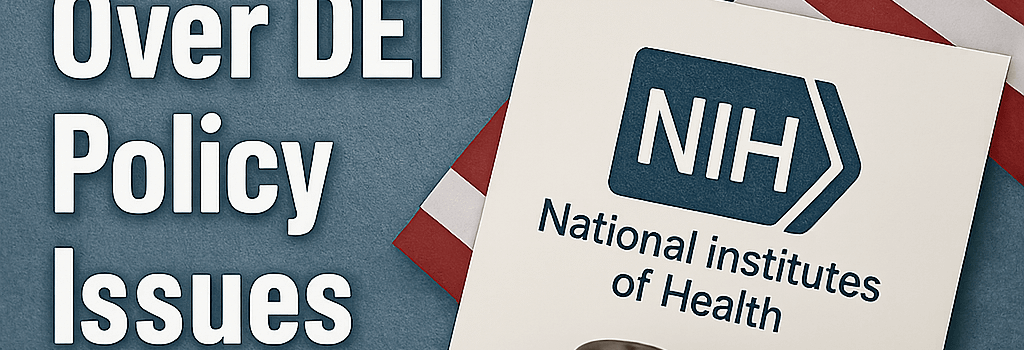Court Restores NIH Grants Over DEI Policy Issues

In a detailed written ruling released July 3, 2025, U.S. District Judge William Young of Massachusetts rebuked the Department of Health and Human Services (HHS) and the National Institutes of Health (NIH) for abruptly terminating dozens of research grants under an undefined Diversity, Equity, and Inclusion (DEI) policy. While the funding restoration now applies only to plaintiffs in related lawsuits—due to recent Supreme Court precedents—the ruling underscores significant procedural and technical flaws in the grant-management workflow.
Background: From Executive Order to Funding Freeze
On January 20, 2025, a new administration issued an executive order directing federal agencies to scrutinize grants through the lens of DEI and gender identity. Without defining key terms, NIH administrators implemented an automated process that flagged and canceled grants deemed noncompliant. Trial evidence showed grant lists were generated externally by an advocacy group (DOGE) and forwarded to NIH officials, who often approved cancellations within minutes.
Legal Framework and Supreme Court Interventions
Judge Young’s ruling centers on the Administrative Procedure Act (APA), which prohibits “arbitrary and capricious” agency actions. Two Supreme Court decisions—United States v. Skrmetti and Trump v. Casa—narrowed his remedial authority:
- Skrmetti clarified that not all government discrimination is unlawful; only certain prejudice triggers redress.
- Casa barred nationwide injunctions, confining relief to parties in the suit.
As a result, only researchers affiliated with state or organizational plaintiffs will see their NIH grants reinstated.
Key Findings: Undefined Policy and Robotic Rollout
- Undefined DEI Terms: The court found no consistent definition of “diversity, equity, and inclusion” across the executive order, internal memoranda, and NIH policy documents. Multiple NIH officials drafted conflicting definitions, then resigned when confronted with policy gaps.
- Automated Grant Cancellations: Evidence at trial revealed that NIH’s eRA Commons system was configured to accept external “termination lists” via email. Officials pressed a single approval button, lacking a merit-based review checklist or risk assessment module.
- Lack of Reasoned Decision-Making: Internal logs show no scientific-merit scoring update, no DEI compliance audit trail, and no cross-referencing with project abstracts. Judge Young described this as “sparse pseudo-reasoning.”
Technical Analysis of Grant Management Systems
NIH’s grant management relies on the eRA Commons platform, built on a Java-based Spring framework with a MySQL backend. A typical workflow includes:
- Submission via Grants.gov XML schema (Version 2.1).
- Merit review panels using the NIH scoring rubric (1.0–9.0 scale).
- Automated notifications to Principal Investigators (PIs) through SMTP servers.
In this case, however, the DEI enforcement module was deployed as a patched Python microservice interfacing via REST API. The service had no unit tests or schema validation, leading to blind acceptance of third-party inputs. Experts note that robust governance would include:
- Schema validation (e.g., JSON Schema Draft 2020-12) for incoming termination lists.
- Role-based access control (RBAC) to prevent single-click mass cancellations.
- Audit logging with cryptographic signing (e.g., SHA-256) for policy decisions.
Expert Commentary and Stakeholder Perspectives
“In large scientific funding agencies, policy changes must be codified in the CFR and tested through pilot programs,” says Dr. Amanda Reyes, a public policy analyst at the Brookings Institution. “The NIH’s rapid rollout lacked both transparency and technical controls, creating systemic risk to ongoing research.”
“From an IT governance standpoint, the absence of a rollback mechanism in the eRA Commons patch was a critical oversight,” notes Raj Patel, CTO of a major grant-tracking software firm. “Best practices dictate feature flags and staged rollouts to catch errors early.”
Implications for Research Collaboration
The ruling may prompt NIH and other agencies to:
- Upgrade grant portals with policy-as-code frameworks (e.g., Open Policy Agent).
- Integrate CI/CD pipelines for policy changes, including automated testing against real-world scenarios.
- Implement stakeholder feedback loops via public comment periods before enforcement.
Future Outlook: Systemic and Policy Reforms
Judge Young lamented the politicization of NIH funding: “The new administration weaponized what should not be weaponized—the health of all Americans.” Going forward, agencies may need to balance policy goals like DEI with the APA’s procedural safeguards. Potential reforms include:
- Mandating regulatory impact analyses for executive orders affecting scientific grants.
- Requiring machine-readable policy definitions published in a central Federal Register API.
- Strengthening the Office of Science and Technology Policy oversight for cross-agency consistency.
Conclusion
While the court’s decision restores funding for a subset of NIH grantees, the broader lesson is clear: policy enforcement in grantmaking demands precise definitions, comprehensive testing, and documented reasoning. As agencies modernize their IT systems, they must embed legal and technical guardrails to uphold both scientific integrity and administrative law.